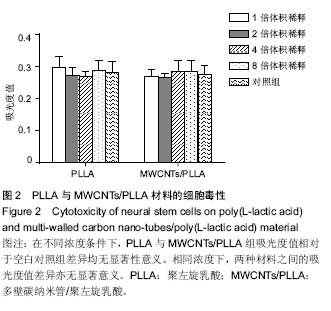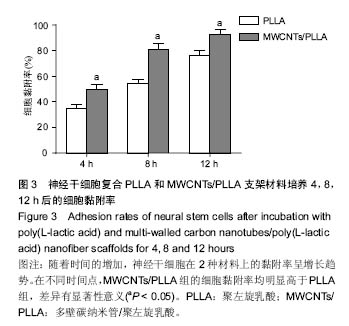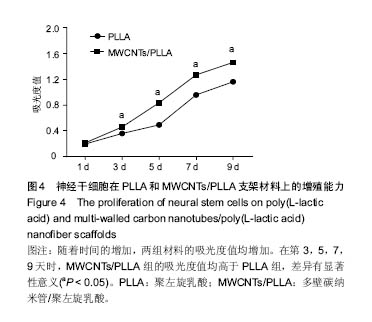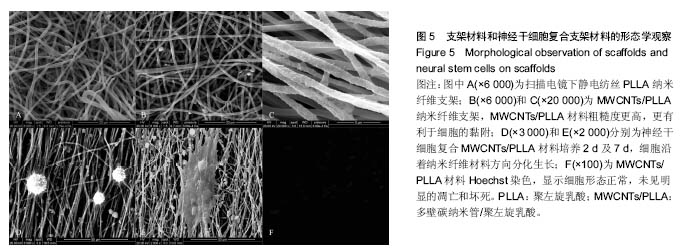| [1]Nichols CM, Brenner MJ, Fox IK, et al. Effects of motor versus sensory nerve grafts on peripheral nerve regeneration. Exp Neurol. 2004;190(2):347-355.[2]IJkema-Paassen J, Jansen K, Gramsbergen A, et al. Transection of peripheral nerves, bridging strategies and effect evaluation. Biomaterials. 2004;25(9):1583-1592.[3]Houle JD, Tessler A. Repair of chronic spinal cord injury. Exp Neurol. 2003;182(2):247-260.[4]Evans NR, Davies EM, Dare CJ, et al. Tissue engineering strategies in spinal arthrodesis: the clinical imperative and challenges to clinical translation. Regen Med. 2013;8(1):49-64.[5]Quarto R, Giannoni P. Bone Tissue Engineering: Past-Present-Future. Methods Mol Biol. 2016;1416:21-33.[6]Wen X, Wang Y, Guo Z, et al. Cauda equina-derived extracellular matrix for fabrication of nanostructured hybrid scaffolds applied to neural tissue engineering.Tissue Eng Part A. 2015;21(5-6):1095-1105.[7]Bhang SH, Lim JS, Choi CY, et al. The behavior of neural stem cells on biodegradable synthetic polymers. J Biomater Sci Polym Ed. 2007;18(2):223-239.[8]Bini TB, Gao S, Xu X, et al. Peripheral nerve regeneration by microbraided poly(L-lactide-co-glycolide) biodegradable polymer fibers. J Biomed Mater Res A. 2004;68(2):286-295.[9]Xu CY, Inai R, Kotaki M, et al. Aligned biodegradable nanofibrous structure: a potential scaffold for blood vessel engineering. Biomaterials. 2004;25(5):877-886.[10]Hurtado A, Cregg JM, Wang HB, et al. Robust CNS regeneration after complete spinal cord transection using aligned poly-L-lactic acid microfibers. Biomaterials. 2011; 32(26):6068-6079.[11]Wang HB, Mullins ME, Cregg JM, et al. Varying the diameter of aligned electrospun fibers alters neurite outgrowth and Schwann cell migration. Acta Biomater. 2010;6(8):2970-2978.[12]Yu Y, Lü X, Ding F. Influence of Poly(L-Lactic Acid) Aligned Nanofibers on PC12 Differentiation.J Biomed Nanotechnol. 2015;11(5):816-827.[13]Yu Y, Lü X, Ding F. microRNA regulatory mechanism by which PLLA aligned nanofibers influence PC12 cell differentiation. J Neural Eng. 2015;12(4):046010.[14]Jahno VD, Ribeiro GB, dos Santos LA, et al. Chemical synthesis and in vitro biocompatibility tests of poly (L-lactic acid). J Biomed Mater Res A. 2007;83(1):209-215.[15]Gong Y, Zhu Y, Liu Y, et al. Layer-by-layer assembly of chondroitin sulfate and collagen on aminolyzed poly(L-lactic acid) porous scaffolds to enhance their chondrogenesis. Acta Biomater. 2007;3(5):677-685.[16]MacDonald RA, Voge CM, Kariolis M, et al. Carbon nanotubes increase the electrical conductivity of fibroblast-seeded collagen hydrogels. Acta Biomater. 2008; 4(6):1583-1592.[17]Zhang Z, Rouabhia M, Wang Z, et al. Electrically conductive biodegradable polymer composite for nerve regeneration: electricity-stimulated neurite outgrowth and axon regeneration. Artif Organs. 2007;31(1):13-22.[18]He L, Zhao P, Han Q, et al. Surface modification of poly-l-lactic acid fibrous scaffolds by a molecular-designed multi-walled carbon nanotube multilayer for enhancing cell interactions. Carbon. 2013; 56: 224-234.[19]Sun X, Shao H, Xiang K, et al. Poly(dopamine)-modified carbon nanotube multilayered film and its effects on macrophages. Carbon. 2016; 113:176-191.[20]Brewer GJ, Torricelli JR. Isolation and culture of adult neurons and neurospheres. Nat Protoc. 2007;2(6):1490-1498.[21]Ziv Y, Avidan H, Pluchino S, et al. Synergy between immune cells and adult neural stem/progenitor cells promotes functional recovery from spinal cord injury. Proc Natl Acad Sci U S A. 2006;103(35):13174-13179.[22]Darsalia V, Kallur T, Kokaia Z. Survival, migration and neuronal differentiation of human fetal striatal and cortical neural stem cells grafted in stroke-damaged rat striatum. Eur J Neurosci. 2007;26(3):605-614.[23]Paul C, Samdani AF, Betz RR, et al. Grafting of human bone marrow stromal cells into spinal cord injury: a comparison of delivery methods. Spine (Phila Pa 1976). 2009;34(4): 328-334.[24]Li J, Shi R. Fabrication of patterned multi-walled poly-l-lactic acid conduits for nerve regeneration. J Neurosci Methods. 2007;165(2):257-264.[25]Lai BQ, Wang JM, Ling EA, et al. Graft of a tissue-engineered neural scaffold serves as a promising strategy to restore myelination after rat spinal cord transection. Stem Cells Dev. 2014;23(8):910-921.[26]倪石磊,齐宏旭,鲍圣德,等.组织工程支架在犬急性脊髓损伤修复中应用的初步研究[J].中国微侵袭神经外科杂志, 2005,10(9): 404-407.[27]Kabiri M, Oraee-Yazdani S, Shafiee A, et al. Neuroregenerative effects of olfactory ensheathing cells transplanted in a multi-layered conductive nanofibrous conduit in peripheral nerve repair in rats. J Biomed Sci. 2015; 22:35.[28]He L, Liao S, Quan D, et al. Synergistic effects of electrospun PLLA fiber dimension and pattern on neonatal mouse cerebellum C17.2 stem cells. Acta Biomater. 2010;6(8): 2960-2969.[29]Kabiri M, Oraee-Yazdani S, Dodel M, et al. Cytocompatibility of a conductive nanofibrous carbon nanotube/poly (L-Lactic acid) composite scaffold intended for nerve tissue engineering. EXCLI J. 2015;14:851-860.[30]Yoo HS, Kim TG, Park TG. Surface-functionalized electrospun nanofibers for tissue engineering and drug delivery. Adv Drug Deliv Rev. 2009;61(12):1033-1042.[31]Feng ZQ, Wang T, Zhao B, et al. Soft Graphene Nanofibers Designed for the Acceleration of Nerve Growth and Development. Adv Mater. 2015;27(41):6462-6468.[32]Kabiri M, Soleimani M, Shabani I, et al. Neural differentiation of mouse embryonic stem cells on conductive nanofiber scaffolds. Biotechnol Lett. 2012;34(7):1357-1365.[33]Lovat V, Pantarotto D, Lagostena L, et al. Carbon nanotube substrates boost neuronal electrical signaling. Nano Lett. 2005;5(6):1107-1110.[34]Ogawa Y, Sawamoto K, Miyata T, et al. Transplantation of in vitro-expanded fetal neural progenitor cells results in neurogenesis and functional recovery after spinal cord contusion injury in adult rats. J Neurosci Res. 2002;69(6): 925-933.[35]Piltti KM, Salazar DL, Uchida N, et al. Safety of human neural stem cell transplantation in chronic spinal cord injury Stem Cells Transl Med. 2013;2(12):961-974.[36]Tavares I. Human neural stem cell transplantation in spinal cord injury models: how far from clinical application. Stem Cell Res Ther. 2013;4(3):61.Lu Y, Wang MY. Neural stem cell grafts for complete spinal cord injury. Neurosurgery. 20 |
.jpg)






.jpg)